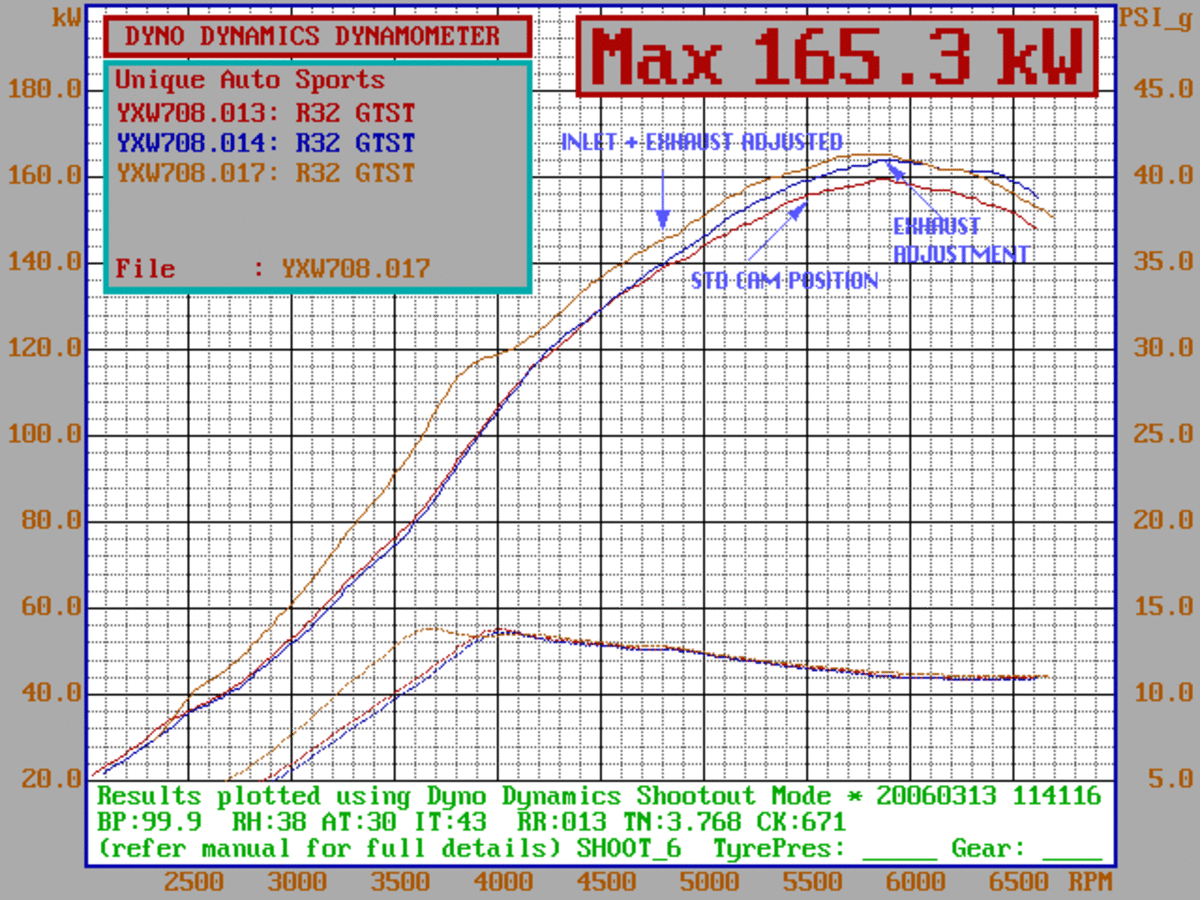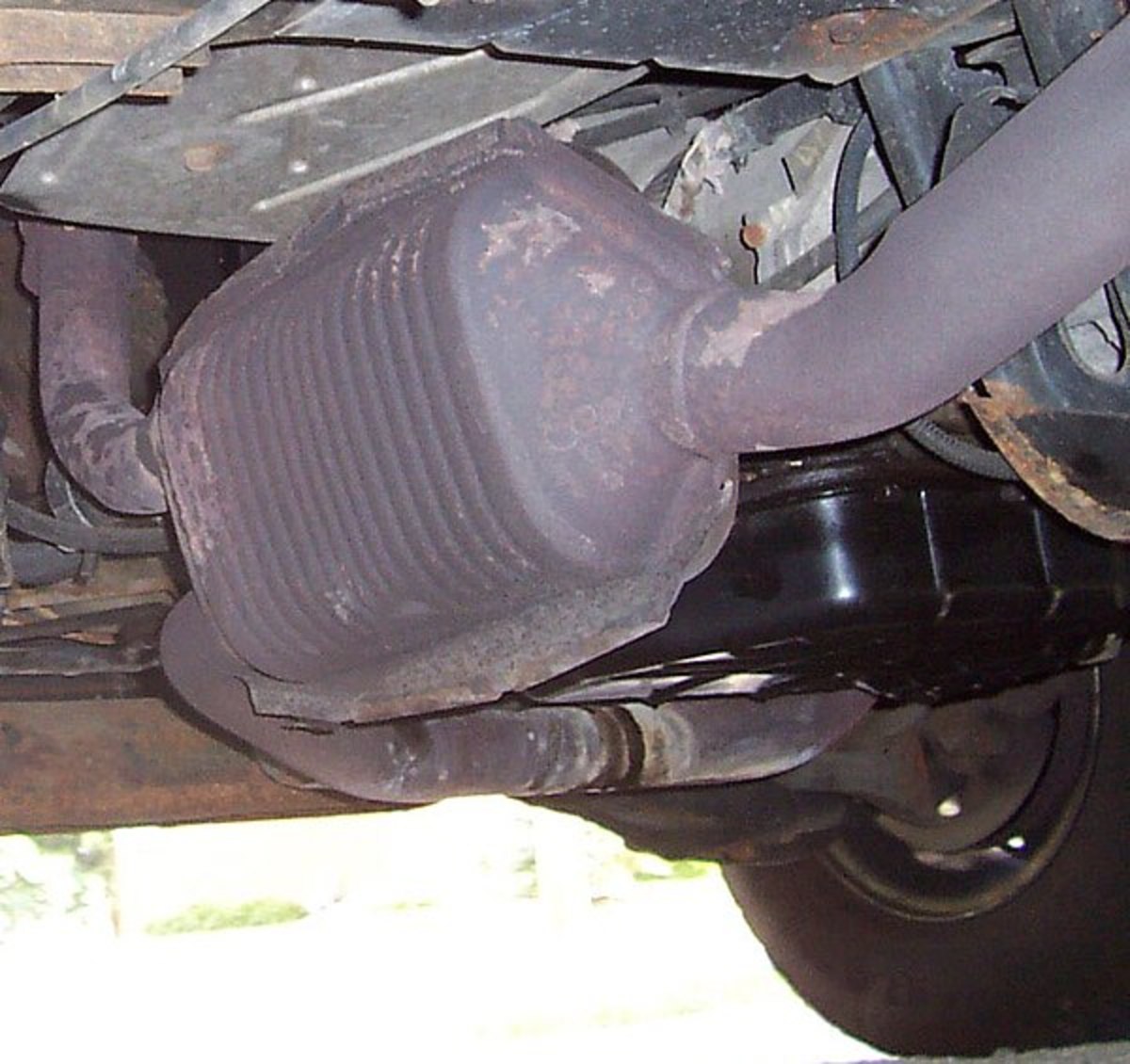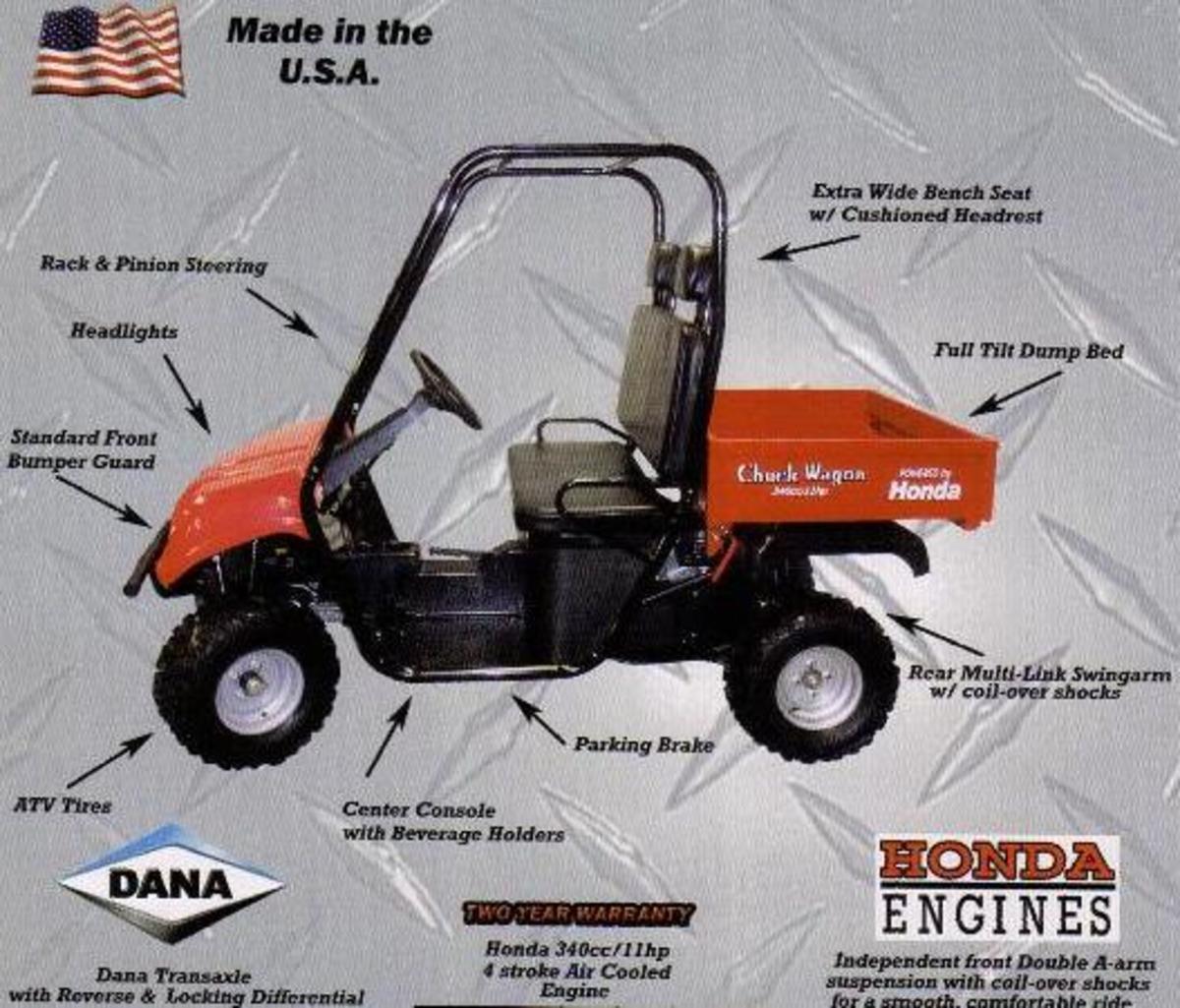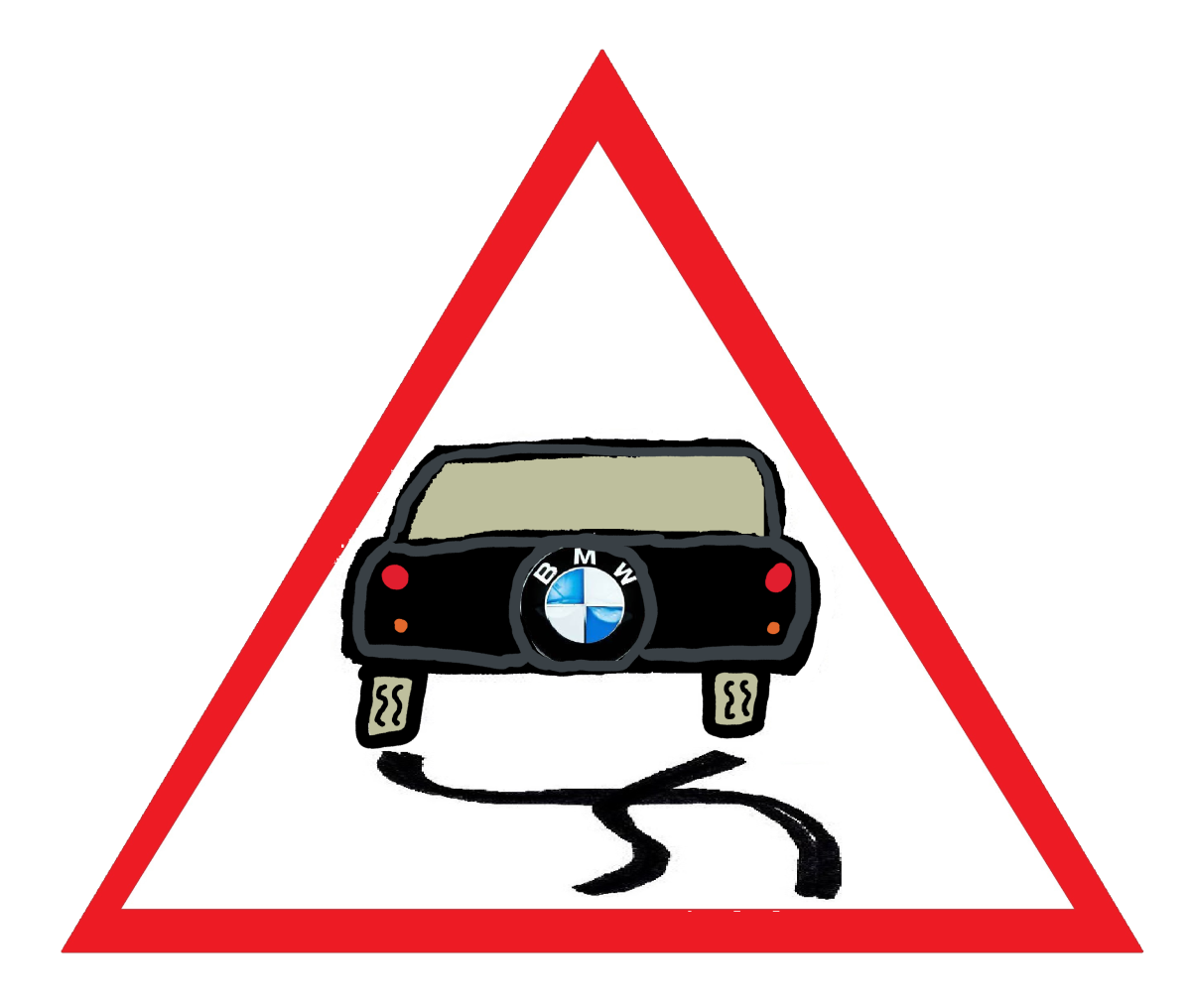Nissan SR20
Update Added to The Bottom of This Page!
So after two years of nothing, I've added another update relating to the Nissan S chassis cars. I think you guy's will like it! :)
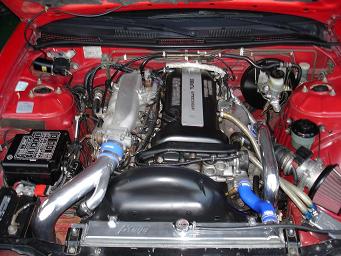
The Nissan SR20DET engine has quickly become a favorite among the Nissan 240SX enthusiasts. It's gained a massive aftermarket following in North America, despite never actually being used in a car the Nissan has sold here. The SR20DET is a Dual Overhead Camshaft (DOHC) inline four cylinder engine. In its first years, the SR20 came with 205PS (roughly 200HP). By the time the SR20 engine was phased out of production in 2002, it was producing 250HP.
When it comes to the letters and numbers used to identify an SR20 engine:
- SR: Engine Code
- 20: Two Liters
- D: Dual Overhead Cam
- E: Electronic Fuel Injection
- T: Turbocharged
The SR20 engine is known for its incredible strength given its small size. Featuring an aluminum block, beefy connecting rods, pistons and crankshaft, the SR20 can realiably make in excess of 500HP on the OEM engine internals. The earlier SR20 engines featured a small T25 turbocharger which pumped out 7 pounds of boost in stock trim. Later SR20's featured a larger T28 ballbearing turbocharger, which was neccesary to support the increasing power levels of the engine. From an enthusiasts perspective, the SR20 requires a few things in order to make more horsepower than stock. It requires higher-capacity fuel injectors, a larger fuel pump, and a front-mounted intercooler. The SR20, with standard fuel equiptment, and the standard side-mounted intercooler in place, will have a hard time supporting any more than 12 pounds of boost pressure, given the smallish injectors and lack of cooling capacity of the standard intercooler.
A few well-worn steps to reliable increases in horsepower are as follows:
- The standard side-mounted intercooler needs to be tossed in favour of a front-mounted intercooler. Using a front-mount intercooler increases the surface area of the intercooler, and also places it in the ideal position for cooling performance.
- The standard injectors can support a maximum of 250HP, beyond that they're incapable of supplying enough fuel. One technique enthusiasts use is using later-model SR20 injectors which are rated to 440cc's. Aftermarket injectors up to 1600cc are available.
- The fuel pump is adequate for stock and slightly higher than stock power levels. A common replacement is a Nissan 300ZX fuel pump, or a popular aftermarket fuel pump from a company like Walbro.
- The factory exhaust does its job well, keeping the car quiet and emissions friendly. However, the stock exhaust system also does a great job of restricting power. The most popular method of reducing exhaust restriction is to use a 3" diameter exhaust from the turbocharger to the muffler. This reduces backpressure, which makes the turbochargers job of spooling into boost easier. A free-flowing exhaust will allow for faster turbocharger spool and more power. The best method is to use a 3" downpipe, 3" catalytic converter replacement pipe, and a 3" mandrel bent cat-back exhaust.
- The stock SR20 camshafts do a nice job of allowing the car to be emissions friendly, fuel efficient, and have a nice idle. However, from a performance standpoint, the camshafts are strangling the engine! A nice set of aftermarket camshafts, even on a stock turbocharged motor, can see great performance increases. They MUST be tuned by a knowledgeable tuner on a dyno to see the best, most reliable results. Companies like HKS and Crower offer countless camshaft combinations for the SR20.
- And finally, who can forget the ever-popular aftermarket intake system? A mandrel-bent pipe with an airfilter on the end does an excellent job or making it easier for air to enter the engine. This of course leads to more power. Not all intakes are created equal. Chose a reputable company, or if you must buy one on Ebay, replace the filter that comes with the kit with a K&N filter for peace of mind.

The Down Pipe
Pictured on the right is a 3 inch diameter, free-flowing down pipe. Simply replacing the stock cat-back exhaust with a free-flowing exhaust will not maximize performance. Companies from both North America and Japan offer downpipes at prices ranging from $100 to $500.
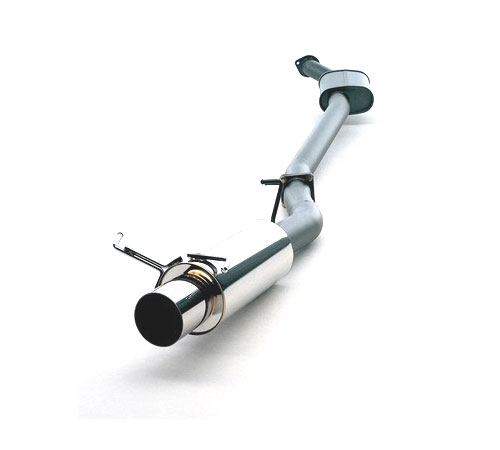
The catback exhaust
A 3 inch free-flowing, mandrel bent exhaust, when combined with a 3" downpipe and catalytic converter replacement pipe will unleash the full potential of your turbocharger. Exhausts ranging from several hundred to several thousand dollars are available for the SR20, made from everything from stainless steel to titanium.

Test Pipe
The test pipe eliminates the factory catalytic converter, which has a positive effect on power and performance, but a negative effect on the environment. Essentially, the catalytic converter reduces a vehicles emissions by a large ammount. Getting rid of it will cause your car to spew large ammounts of pollution out of its exhaust.
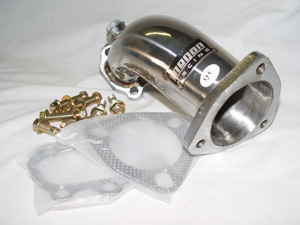
Turbo Elbow
The turbo elbow is the pipe that comes directly off the turbocharger, turns a sharp bend, and then channels the exhaust into the downpipe. The factory piece is cheap to make and lasts forever. An aftermarket piece divides the exhaust flow coming out of the wastegate, merging it into the exhaust later on, usually in or right after the downpipe. This reduces turbulance and increases performance.
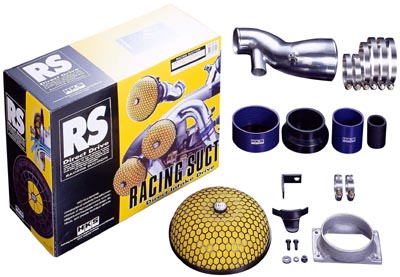
Free-Flowing Intake
Pictured on the right is one of the most expensive intakes on the market, the HKS Racing Suction intake kit. Aftermarket intakes replace the restrictive factory intake piping and filter with a free-flowing, large surface area filter and a mandrel (sometimes crush) bent pipe. Intake kits cost anywhere from $89 to $600.
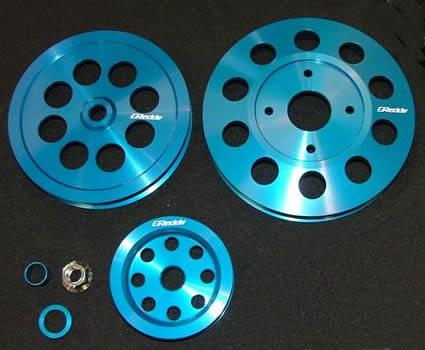
Aftermarket Pulleys
Aftermarket pullets, these particular ones made by Greddy, reduce parasitic loss by under-driving the accessories. An engine is forced to surrender some of its power by driving the various accessories. Well made pulleys will reduce parasitic losses, free up power, and look good while doing so! Pulleys are one spot where you should NEVER cheap out. Buy pulleys from trusted companies with a history of quality parts.

Aftermarket Camshafts
It's my personal belief that before you upgrade the turbocharger on your SR20DET engine, you should address the camshafts first. A rough example is: An SR20 at 15 pounds of boost will make 300hp with stock cams. An SR20 with 15 pounds of boost will make 340hp with aftermarket camshafts. This is a ROUGH example. Camshafts allow your engine to breath easier.
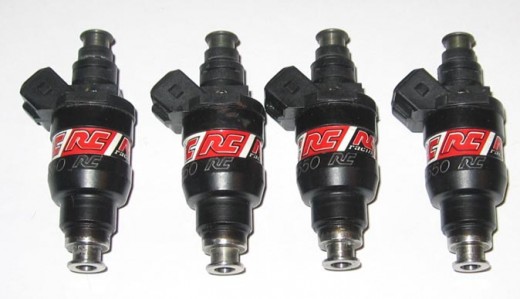
Injectors
Aftermarket injectors are only needed if your power goals will max out the stock injectors. If your injectors are running at an 85% duty cycle (that is, they're squirting at 85% of max capacity), you should seriously think about upgrading. Injectors are expensive, but a properly sized injector will allow your engine to live a long, happy life.

The fuel pump
You should seriously consider upgrading the stock fuel pump to either a Nissan 300ZX pump, or an aftermarket pump from a company like Walbro, Nismo, or any other reputible company! A fuel high-flow pump will keep your engine, and your wallet, happy.

Quality Front Mount Intercooler
A front mount intercooler has more surface area than the stock side mount intercooler, and is placed in a better spot for cooling. As a result, your intake temperatures will decrease, leading to increased power and more reliability. Lower intake air tempteratures reduce the chances of detonation.
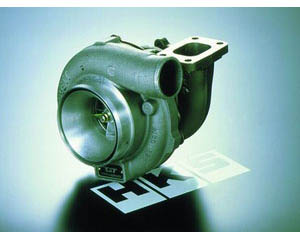
Turbocharger Upgrade
You should only upgrade your turbocharger after you've upgraded all of the sub-systems. An aftermarket turbocharger will flow more air, increasing power. A properly sized turbocharger will offer great spool, good power increases, and reliability. Don't get a turbo that's too big for your power goals. And don't buy HKS turbochargers if you can buy a Garrett turbocharger - Garrett makes HKS turbo's, so they're NEARLY identicle.
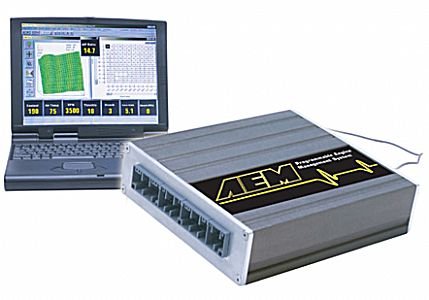
Upgrading Your ECU
An upgraded ECU system will benefit not only the stock car with no aftermarket parts, it will also benefit a very modified engine as well. A knowledgeable tuner should turn your ECU for the best balance between power, reliability, driveability, and even fuel mileage, seeing as gas isn't getting any cheaper. Make sure your tuner knows what they're doing, or your engine might go pop.
Don't just assume you buy these parts and call it a day!
The above list of parts are just something to give you an idea of where to start with your SR20 (or any engine, for that matter). You'll also need to address the factory clutch, which will begin to slip past a certain power level, the wheels and tires also need attention. You can either get a sticky, high performance tire mounted to the stock wheels, or you can get a wide aftermarket wheel and mount a performance tire to that. Idealy, the wider the wheel, and the stickier the tire, the more traction you'll have. Lots of stock cars have problems with traction, let alone fire-breathing turbocharged cars. Expect to go through LOTS of tires if you floor it from every traffic light or stop sign. Also expect lots of tickets and dirty looks from the motorists on the road who feel its their duty to act as the police.
Taking shots at busy bodies aside, the most important thing to do when building your SR20 is to take your time and enjoy each modification you do. Don't just go and build a 500HP monster without enjoying a stock, or at least near stock, SR20 first! Half the fun of driving a rear-wheel drive car is learning to drive in one with low to moderate power. You're less likely to kill yourself in a 100HP AE86 Corolla GTS than you are in a 400HP 240sx!
If you can drive a 240sx with a stock SR20 to its limits without being a danger to yourself or others, then you'll know you're ready to start dumping money into the blackhole that is the automotive hobby!
R32 GTR Seats - (This is the update!)
Here's the deal with this update. While the Nissan S chassis cars are awesome in every way possible, they have terrible seats! Having been rocking my S chassis weekend toy with a little over 300HP out of an S15 turbo, I've been having a ton of fun, but the damn car tries to toss me out the window every time I take a corner (I'm talking about grip driving here, drifting, and its sudden changes in direction most likely would have thrown me clear of the car by now)!
In an attempt to prevent my car from spontaneously ejecting me during a drive, I've upgraded my drivers seat. Now since my car is actually a 180sx, and not a 240sx, the drivers seat is on the right, and so the seat that I've aquired is the drivers (right hand) seat from an R32 GTR. If you're driving a left hand drive 240 or 200sx, you'll need to source a passenger seat from an R32 GTR (this is actually better, because the passenger seats are always newer, and far less worn than the driver seat).
These puppies will bolt in with no issues what-so-ever, and are probably my favorite stock seats ever sold in a production car. In my R32 GTS-T, I've tossed both front seats for GTR seats, and the difference is night and day, no matter what car you're driving.
The best part about R32 GTR seats is that they're reclinable, which means you can still have a back seat. They also hold you in place just as well as most aftermarket seats, which means you can focus on driving and talking to your car through its steering wheel, instead of using all your limbs to keep yourself in place on the seat. As far as I'm concerned, spirited driving isn't any fun anymore with terrible seats. You can do so much more, and enjoy every little movement, slide and understeer - EVERYTHING is magnified so much more, you really feel like you control the car a lot more.
The best part about R32 GTR seats is that they're CHEAP! I have three, one in my 180sx and two in my R32 GTS-T, and I've still only spent $700 for them, mostly because two of them are in nearly new condition. Comapre that to a reclinable Bride or Sparco seat, and you'll see just how much money you can save on a good seat. R32 GTR seats also look better than 90% of all aftermarket seats anyway, especially when used in other Nissan's. They blend in and look stock, but sporty as all get out.
Finding one is even getting easier too, thanks to forums like NicoClub and Zilvia. You can scour Ebay or Craigslist, or even go through a Yahoo Japan auctions broker (which is what I did for my seats, and probably 75% of all my other parts). My R32 has an ARC intercooler on it that's mint, and cost me $500 bucks shipped from Japan to Canada. Had I bought it new, I'd probably have spent more than $2,000 shipped. Ouch!

